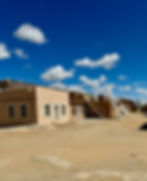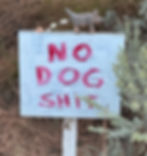
Cumulative Miles: 6,039
States Visited: 17
Number of Speeding Tickets: 1
Lesson Learned: If you think Philadelphia is an old town, think again.
Yesterday, driving from the canyon to New Mexico, we crossed back over the continental divide and into Mountain Time, markers that we are on the move towards the East Coast. I have mixed feelings about this, but more on that later.
After a quick breakfast we set out for the visitors' center at Acoma Pueblo, also called Sky City. I think I mentioned yesterday that Acoma Pueblo is set atop a mesa. It's about 15 lonely miles from the hotel with some very dramatic natural landscapes in between. We had timed our arrival to be around 10 am, so we could cruise through their museum and then catch the 10:30 guided tour. Unfortunately, that tour had been cancelled, with the vague reason of "something's happened up there" given by the girl at the ticket desk. She says, "Up there," because the visitors' center is located on the canyon floor and the pueblo is about 347 feet higher atop the mesa. The next tour was scheduled for 11:30, so we had 90 minutes to kill before we could tour the pueblo. We spent time in the small museum. These folks were very skilled in pottery making and weaving and there were some very fine examples of their work, dating back to the 1800's. After that, we took a short walk outside and continued to absorb the scenery. I've seen a lot of rocks and rock formations this trip and it never ceases to amaze me how different they are from one another, each dramatic in its own way.

For the tour, we had to board a bus for the quick, steep trip to the top of the mesa. Our guide, Gail, was a vivacious young member of the pueblo, with a quick wit and self-effacing humor. She was proud of her heritage and gave us some of their colorful history, of which I'll give an abbreviated account here.
The Acoma arrived on this mesa around 1100 AD, which makes it the oldest continually inhabited community in North America. Before that, they believe their people inhabited a neighboring mesa, dating back to about 500 AD. They were conquered by Spanish Conquistadors in 1620 and were forced into subjugation. The Spaniard priests forced them to build a church, carrying timbers from 40 miles away to support the roof and altar. They also forced them to abandon their native religion in favor of Catholicism. In about 1680 they joined together with some other local pueblos and overthrew their Spanish oppressors. The other pueblo communities then demolished the churches Spain had forced them to build, but the folks at Acoma did not. A hundred years later the Spanish again approached Acoma, but this time with more friendly intent. Oral history has it that a Franciscan Father saved the life of an Acoma child, thus earning the respect of the people. They went on to become friends and he eventually assisted the locals in refurbishing the altar of the church, this time including symbolism from their culture in how they presented paintings of St. Francis and St. Benedict. As tourists, they asked that we not take photos within the church, its grounds, or the cemetery, so I can't show you how incredible this 1640 edifice was from up close. It has a packed dirt floor, whitewashed walls, covered with beautiful symbols that include both traditional Catholic iconography, as well as symbols important to the faith of the local people.

(atop the mesa. Church of St. Esteban in the background)
Although the mesa was generally flat-topped, that doesn't mean the ground was level and even. It was still rocky and often uneven and we had to watch our steps. Making it even trickier was a pair of small dogs of undetermined breed that tagged along and play fought underneath the whole time. It was cute, at first, but a little annoying later.
There are about 500 or so houses on the mesa today. They do not have electricity or running water, which is why most of the Acoma today live in a community about 15 miles away. Some have small generators or even a solar panel or too, but that's about it. I think the tribe has unobtrusively installed some communal bathrooms and showers, which I'm sure come in handy on festival days.

(The white ladders lead into Kiva's where religious ceremonies are held)
There are a few permanent residents on the mesa. In addition, the tribe honors six families each year by allowing them to live there for a year too. This doesn't mean the majority of the homes are abandoned. Far from it. The mesa is a sacred place to them and families come and stay in their ancestral homes during holidays and festival times. They keep the homes in good shape, replastering them with adobe every few years. Because this is sacred ground, they do not sell or rent them to others. When festivals and religious ceremonies held in the tiny plaza, 500-600 people attend.
Several years ago I went to a festival in September at a different pueblo. It was a corn dance to celebrate the harvest. The dancers carried symbols of the corn, as well as a statue of the virgin mary, adorned with native iconography. I think they way the meld their traditional religion with christianity is beautiful. It rained during this festival -- I mean REALLY poured, but that did not deter the dancers, drummers, and spectators. Everyone, including me, was joyfully soaked to the skin. I'll remember that experience as long as I live.
I could go on and on, but I don't want to try your patience. Acoma was a great experience and one I encourage you to consider if you're ever in the Albuquerque area. Oh, and by the way, we found out why the 10:30 tour was cancelled. There was a funeral on the mesa for an honored resident and we saw the newly covered grave when we went toured the church.
After this wonderful tour, we felt pretty grooved and cruised on toward our next destination, The pueblo of Taos about three hours to the northeast. Taos is known for its very large pueblo buildings and wonderful handcrafts and jewelry. We plan to hike some too. Fortunately, we're not far from the Rio Grand Canyon Gorge. It's the same Rio Grand that separates the USA from Mexico, but a bit smaller here. We'll be in Taos two nights, long enough to do laundry, clean the car, hike, and explore the local scene.
Last night after we settled in, we took a short walk and I spied this sign on one of the neighbor's yard. It doesn't mince words, does it, and it even gives you a visual if you can't read lol.

Goodnight all!





